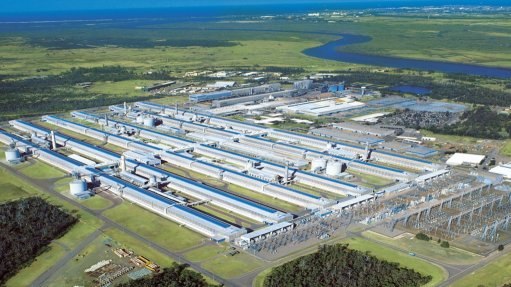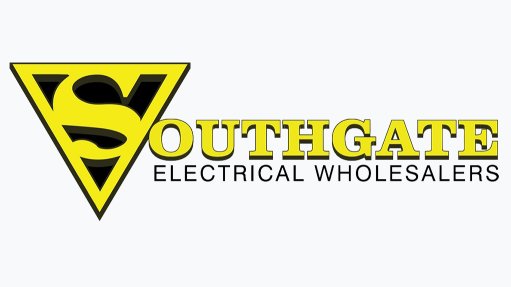Municipalities need to prioritise water infrastructure – KPMG
With infrastructure being a vehicle for economic development, global consulting firm KPMG says government and municipalities should prioritise infrastructure projects, especially in the water sector where there is a growing demand.
“The challenges in the water industry have not changed that much. We are still faced with municipalities that are not equipped with the right level of skills and competencies to execute their day-to-day functions,” says KPMG infrastructure and major projects associate director Antonino Manus.
As a result, the sustainability of services, especially in smaller municipalities, should be a concern. The lack of routine maintenance, caused by a lack of skills and resources, as well as unfavourable procurement systems, are some of the causative factors of a sector facing more challenges as South Africa moves into a future where water demand and sanitation services will increase.
Owing to this, she notes that to pre-empt intervention from a different tier of government, municipalities must adopt a culture of budgeting and the running of operations, as well as maintaining existing infrastructure.
She explains that funding allocated from conditional grants for infrastructure development and upgrades is often not spent or is misspent, owing to a lack of capacity to implement or lack of oversight. Linked to this are service providers selling technology to municipalities that are unable to maintain or implement, owing to a lack of knowledge.
Manus adds that much industrial development occurs in areas where there is little or no sustainable water resources, therefore, requiring strategic planning to ensure inter-basin transfers and strategic storage to sustain this development.
“Water resources and services enable municipalities to grow economic areas, as well as providing communities with access to water supply. Economic stimulation will lead to job creation and enable people to pay for services,” highlights Manus.
Additionally, KPMG posits that ageing infrastructure must be replaced to reduce water losses. In so doing, municipalities must have asset management plans in place that inform their infrastructure replacement programmes. The company explains that these programmes must be budgeted for either through grant funding or in-house revenue-based funding.
Further, government programmes such as the Blue Drop and Green Drop scorecards must be used as a basis to identify those municipalities whose water losses are extremely high, after which dedicated initiatives should be implemented to reduce these losses.
Drought Effects
Manus explains that the ongoing drought has, furthermore, created a sense of urgency in not only the Department of Water and Sanitation (DWS) to accelerate Phase 2 of the Lesotho Highlands Water Project (LHWP) but also among municipalities to start implementing water demand management measures.
Phase 2 of the LHWP comprises two main components: a water transfer component to augment the delivery of water to South Africa, and a hydropower component, which will increase electricity-generation capacity in Lesotho to help meet the country’s electricity requirements. In addition, each country has the opportunity to undertake ancillary developments in its territory.
Manus recounts that the DWS has been planning the implementation of Phase 2 for years. The DWS has also been warning municipalities to reduce their water demand until Phase 2 of LHWP begins.
“Although the Gauteng metros have been implementing dedicated water demand management programmes to reduce water demand, it has not always been successful,” says Manus. This is owing to various reasons, including a lack of funding to implement infrastructure programmes, population growth and water wastage.
She highlights that astute water resource planning concealed South Africa from being a water-scarce country, but that the drought has revealed the gradual receding of this reality to all. “It is, therefore, a positive spin-off that all in the water sector now understand how desperate a situation can get when there simply is no water to meet demand.”
Prospective Projects
Manus says prospective opportunities in the water infrastructure industry lie in the potential to explore other alternative water resources. For example, the City of Johannesburg drafted bylaws regarding treated effluent reuse last year. This water can be used by industries or parks that do not require potable supply for their operations.
However, she warns that the country should become more progressive in the reuse of water to the same extent as, for example, Singapore, which made the treated effluent reuse concept an integral part of its water mix, and treating wastewater to potable standards on a remarkable scale.
“Households need to start reviewing their water use and reduce wastage. Compared with other countries, the cost of water in South Africa is still relatively cheap. Households could see a rise in water tariffs, owing to the infrastructure required to access the water,” she urges.
Manus further points out that the latest trend internationally is to use membrane filtration technology to purify water to usable standards. She notes that membrane filtration is expensive, but is becoming a more economically favourable option as demand and subsequent production increase.
Various projects by the South African Water Research Commission are determining ways of making this technology even more robust and applicable to rural African environments.
The company states that, with the projected future cost of electricity, it can be expected that water supply treatment will also cost much more, which will, in turn, increase water tariffs.
Wastewater technology is highly energy dependent and this will be an additional cost factor.
“It is time for South Africa to reconsider water and wastewater treatment design, as well as water reticulation and wastewater collection, to ensure that there is more investment in more robust, but less energy-demanding systems,” concludes Manus.
Article Enquiry
Email Article
Save Article
Feedback
To advertise email advertising@creamermedia.co.za or click here
Press Office
Announcements
What's On
Subscribe to improve your user experience...
Option 1 (equivalent of R125 a month):
Receive a weekly copy of Creamer Media's Engineering News & Mining Weekly magazine
(print copy for those in South Africa and e-magazine for those outside of South Africa)
Receive daily email newsletters
Access to full search results
Access archive of magazine back copies
Access to Projects in Progress
Access to ONE Research Report of your choice in PDF format
Option 2 (equivalent of R375 a month):
All benefits from Option 1
PLUS
Access to Creamer Media's Research Channel Africa for ALL Research Reports, in PDF format, on various industrial and mining sectors
including Electricity; Water; Energy Transition; Hydrogen; Roads, Rail and Ports; Coal; Gold; Platinum; Battery Metals; etc.
Already a subscriber?
Forgotten your password?
Receive weekly copy of Creamer Media's Engineering News & Mining Weekly magazine (print copy for those in South Africa and e-magazine for those outside of South Africa)
➕
Recieve daily email newsletters
➕
Access to full search results
➕
Access archive of magazine back copies
➕
Access to Projects in Progress
➕
Access to ONE Research Report of your choice in PDF format
RESEARCH CHANNEL AFRICA
R4500 (equivalent of R375 a month)
SUBSCRIBEAll benefits from Option 1
➕
Access to Creamer Media's Research Channel Africa for ALL Research Reports on various industrial and mining sectors, in PDF format, including on:
Electricity
➕
Water
➕
Energy Transition
➕
Hydrogen
➕
Roads, Rail and Ports
➕
Coal
➕
Gold
➕
Platinum
➕
Battery Metals
➕
etc.
Receive all benefits from Option 1 or Option 2 delivered to numerous people at your company
➕
Multiple User names and Passwords for simultaneous log-ins
➕
Intranet integration access to all in your organisation


















